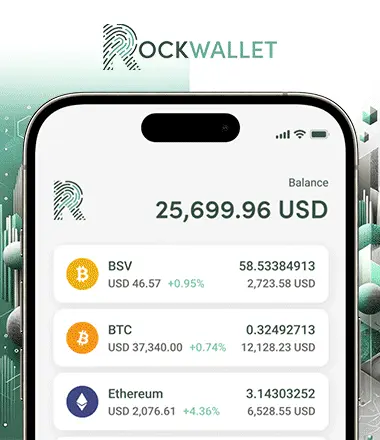Ever since their birth in 2009, cryptocurrencies have continuously gained public interest. Due to their potential impact on the finance sector, individual investors and like-minded corporations have included this unconventional asset into their portfolios. As of December 2020, high activity among traders has caused BTCs price to surge to a staggering $53,219.33.
With COVID-19 forcing digital transformation across industries, digital payments are becoming the new standard. The world is transitioning from physical cash to digital currencies, and this places the spotlight on cryptocurrencies. However, the mass-adoption of crypto will still take some time since various technical concerns need to be addressed first.
But as more technologies and innovations in the finance sector are becoming available, cryptocurrency is finding ways to eventually be implemented across industries. One of the many things crypto enthusiasts look forward to is the introduction of Central Bank Digital Currencies (CBDC). Take a look at the guide below to learn more about CBDC’s core features.

What is a Central Bank Digital Currency?
Over the past few years, cryptocurrencies have gained immense popularity. Since they’re free from the intervention of third-parties, it’s no surprise that they’ve garnered the attention of many. In turn, the public’s interest has caused crypto prices to surge, giving authorities a difficult time controlling its growth.
While cryptocurrency is showing a lot of potential, it’s not posing a real threat to traditional banking or financial systems. It can be used to underpin and improve the technologies which would make things transparent, traceable, and hold banks or governments accountable. On the other hand, technical issues and the constant launch of new coins also put the public at higher risk of scams and cyberattacks. To counter this dilemma, financial institutions from around the world have come together to discuss the idea of their own digital currencies.
Unlike traditional coins that are decentralized, a central bank digital currency (CBDC) is managed by the official monetary authority of a country. Like fiat, it has stored value and carries a unique serial number to prevent offenders from imitating them.
While governments have flirted with the idea of issuing a CBDC, no country has released it just yet. Full implementation would take some time, but it’s good to know what Central Bank Digital Currencies can bring to the table and to understand the potential impact of CBDCs.
Key Concepts and Features
1. Enables public access
In case cash access is limited or suddenly phased out, it’s good to know that the public can easily access a CBDC. While it’s unlikely that cash use will be abolished entirely, CBDCs can also be used as a kind of digital banknote. Eventual adoption will mean ease of use and that both modes of payments are officially recognized by governing bodies.
2. Improves payment systems
CBDCs can improve the overall performance of payment systems. Streamlining to a digital platform will make transactions faster, guarantee user security, and cut money production costs.
Exchanging through a digital platform can also allow governments to remove low-denomination coins, like the penny in the United States. In April 2017, the Bank of Korea initiated a coinless society trial, allowing customers to receive change in prepaid cards instead of coins. This experiment has proved beneficial for the country, allowing it to save up to 53.7 billion Won on coin production.
While nothing is set in stone, the mainstream use of CBDCs can have a similar effect on a nation’s economy.
3. Faster transition to less use of cash
Cash use has significantly declined due to the introduction of credit cards, financial applications, and other digital tools. While a CBDC may not completely end the use of coins and bills, it will further promote electronic transactions. Both businesses and consumers can significantly benefit from this because digital exchanges provide increased convenience and security.
4. Secures cross-border payments
International transactions can be costly since manual data entry, interbank mediation, and other constraints can expose users to unwanted fees and settlement risk. Fortunately, a CBDC can eliminate time lags and other limitations thanks to its ability to identify transactions in real-time.
By reducing processing time and cutting costs, CBDCs can make cross-border payments more efficient.
5. Introduction of new technology
Now that we live in a fast-paced and technologically-advanced age, new technologies are constantly emerging. Similar to how Bitcoin and cryptocurrency have paved the way for advancements in the finance sector, the introduction of CBDC will inevitably bring about other innovations.
With the world gearing towards digitization, relevant agencies will need to find ways to support its use.
Final Takeaways
So far, no country has officially launched a CBDC. There are still various issues within the cryptocurrency industry that need to be addressed, and more research is required to predict its impact on the finance and banking sector.
The idea of CBDCs has gained traction, and many financial institutions have conducted studies to determine their overall usability. With the features mentioned above, consumers, brands, and authoritative agencies have a lot to be excited about. However, only time will determine what its economic and societal implications will be.
Are you relatively new to the cryptocurrency industry? We’ll help you find your way! If you’re looking for a comprehensive guide about Bitcoin for beginners, head over to our blog to get started!
Recommended for you
Tiny payments are changing the expenses landscape. Micropayments and nanopayments are not entirely new concepts and practices. But with the
You can earn money when you explore the world of Bitcoin and understand its intricacies. Once you get the hang

 07-08-2025
07-08-2025 



